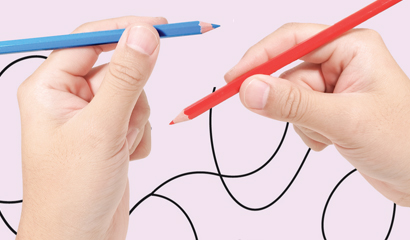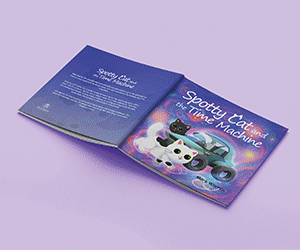Primary Times - the definitive what’s on and where to go family guide of activities and events for children of primary school age. Things to do with your kids during the school holidays including arts and craft activities, music and theatre for children, parties, competitions, days out, and family attractions along with term time drama schools, dance classes, after school clubs and sports activities. Things to do at a place near you!
Getting to know the difference between Right and Left
 You will already know which hand your child chooses to hold a pen or pencil in, but do you know which ear they prefer to listen through or which eye they would use to look down a microscope?
You will already know which hand your child chooses to hold a pen or pencil in, but do you know which ear they prefer to listen through or which eye they would use to look down a microscope?
You may be surprised to know that the answers to these questions are hugely significant when it comes to their learning. Many children are a combination of left and right – for instance, they could be right eyed, left eared, left handed and right footed.
As we live in a right-biased world, children who are right in all four areas have an automatic advantage when it comes to learning and development, but those with left and mixed dominance can face difficulties. So how can we help children who are a mixture?
The Sunflower Trust, an organisation aiming to better integrate children’s brains with their bodies, suggest that in most situations, it is not a case of trying to change the way a child’s brain has wired itself, but helping the brain to be better able to cope.
It is now professionally realised that the left side of the brain, responsible for controlling the right side of the body, is the centre for performing our everyday logical tasks, whether this be our speech, listening, reading, writing or number skills.
When a child is right ear dominant, for example, sound enters the right ear and then travels to the left brain to process it. If the child is left ear dominant, however, the sound must travel across to the right and then back again to the left. It may only take a nanosecond longer, but in a noisy classroom this can make a big difference to a child’s development.
So, how do you find out if your child is left or right dominant, or a mixture of the two? Below are a few fun exercises recommended by The Sunflower Trust that you can do at home to give you an indication:
Hands
Ask your child to catch a ball with one hand and see which one they choose. Also, which hand do they use to brush their teeth?
Ears
Hand them a shell and ask them to listen for the sea. Which ear do they hold it up to?
Feet
Tell your child to get into a position to start a race; the foot they put behind them is most likely to be their dominant foot. You could also put a coin on the floor in front of them and ask them to stand on it with one foot.
Eyes
Give your child a piece of paper with a small hole in the middle and ask them to hold it up and look through it. The eye they use is likely to be their dominant one.
If you find your child to be a mixture of left and right dominance, it usually means that both sides of their brain are working to maintain dominance. This can cause confusion. The Sunflower Trust’s practitioner Sheree McGregor, however, suggests that all children’s development can be improved by getting their senses engaged before school.
McGregor finds that co-ordination activities such as clapping and talking at the same time, or doing some disco dancing to different sounds, help the brain to get up and running and ready to learn.
To find out more about The Sunflower Trust, visit their website: www.sunflowertrust.com
Our favourite co-ordination activities
Hopscotch • Skipping • Marching or skipping while tapping a hand to the opposite knee • Raising your heel behind you when you are walking so your opposite hand can reach behind you to touch it • Dancing • Music • Sports • Art





